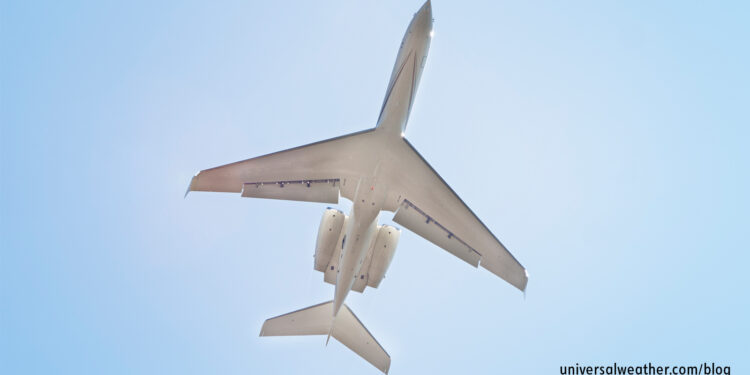Successfully Managing North Atlantic Tracks: Part 1 – Track Basics

This business aviation blog post is part of a series on flight planning through the North Atlantic Tracks.
While North Atlantic Tracks (NATs) provide routing efficiencies and save business aircraft operators on Jet A and other operating costs, there are many rules and regulations associated with this track system and access to it which you must be aware of, including mandated equipment and certification requirements.
The following is an overview of what you need to know:
1. NAT basics
NATs are published twice daily, one set Eastbound and another set Westbound, with the purpose of optimizing routings between North America, Europe, and beyond. The NAT system extends from Flight Level (FL) 300 up through FL 400 and varies daily in terms of latitude range it covers. For example, on one day recently, NATs covered latitudes from just north of Bermuda up through 62.5 degrees N. Operators over the North Atlantic do not have to fly NATs. But, if you avoid them, you’re usually not taking advantage of the jet stream and upper winds. Operators always have the option to route randomly above the NATs or operate below FL 290.
2. NAT revisions
Westbound tracks are published 1130-1900 UTC inclusive and Eastbound 0100-0800 UTC. If you’re operating outside these periods, you must remain clear of the tracks for an additional one hour – so that any lagging aircraft can clear the tracks. If you’re flying in the opposite direction of published NATs, there are usually many routing options available, but it’s important to be diligent in choice of routings and flight levels.
3. Separation within the NAT system
Currently, NAT separation is one degree or 60 NM, and separations are only closer if you’re flying Controller-Pilot Datalink Communications (CPDLC) NATs. CPDLC tracks are published daily, Eastbound and Westbound, and require aircraft to be CPDLC-equipped and -certified. It’s always best for non-CPDLC-equipped operators to stay clear of CPDLC tracks, as there’s a higher concentration of aircraft in this area. Effective February 2015 general track separation will begin to be reduced to half a degree, or 30 NM, and this will require aircraft to be equipped with ADS-B capability.
4. Equipment requirements and certifications
To operate within the NAT system, operators must have minimum equipment capabilities and certifications. For example you must be Reduced Vertical Separation Minimum (RVSM)-certified with Minimum Navigation Performance Specification (MNPS) capability. Operators must also have HF radio, and this requirement is not going away anytime soon. Keep in mind that both active pilots must be certified for both RVSM and MNPS. Be mindful, also, that if you’re operating with a global positioning system as your primary means of navigation, you’ll need to ensure adequate satellite coverage over your entire routing. Third-party providers have the tools to perform satellite coverage analysis and check that you’ll have appropriate coverage during the time of your flight.
5. Additional equipment considerations
While 8.33 MHz radio spacing is not a requirement to use the NATs, you’ll need this equipment when operating in Europe above FL 190. In the future 8.33 MHz radio spacing requirements are expected to extend to ground level in Europe. While it’s currently possible to apply for 8.33 MHz radio spacing and TCAS 2 exemptions, when you operate in Europe, this can be difficult as you’ll need to secure exemptions from every country you fly over.
Conclusion
If your aircraft is performance-limited or does not have all required equipment/certifications, you may end up on lower tracks, or you may be kept below FL 290. It pays off to be properly equipped for NAT and European operations in order to maximize operating flexibility. While some of this equipment is expensive, operators benefit over time by way of fuel savings and more convenient operations.
Stay tuned for Part 2, which covers more information on navigating through the North Atlantic Tracks.
Questions?
If you have any questions about this article or would like assistance with flight planning your next trip, contact me at markmiller@univ-wea.com.




